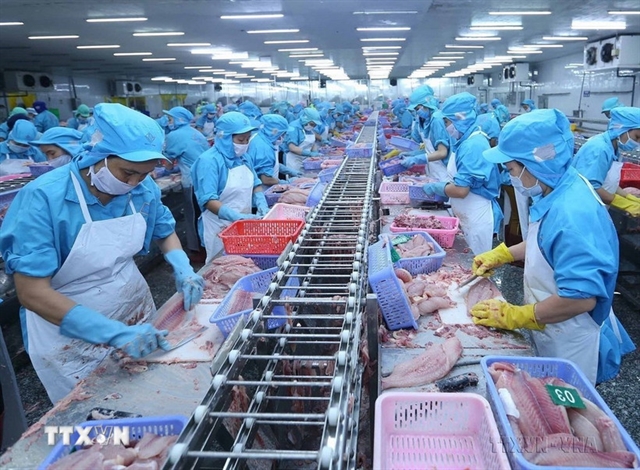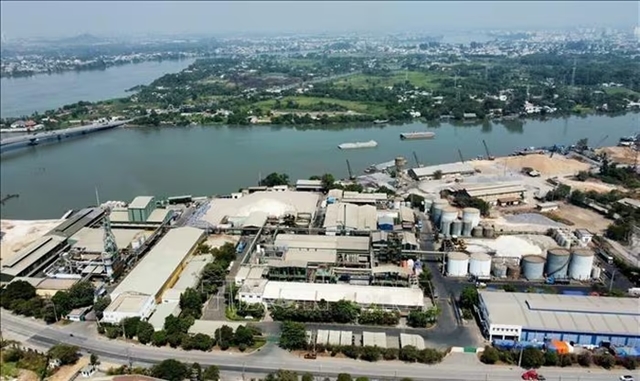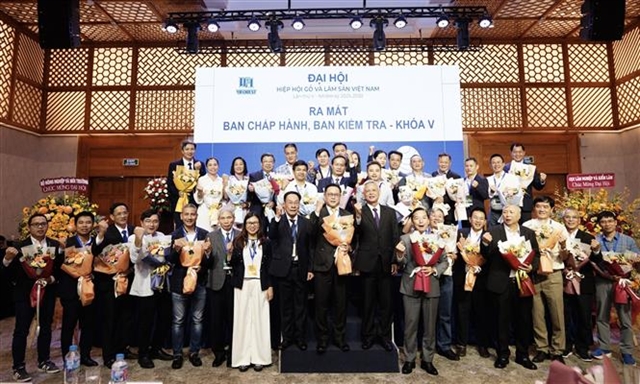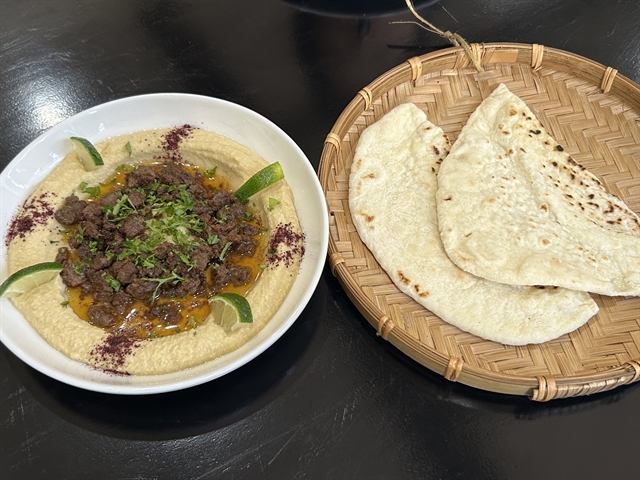 Restaurant Review
Restaurant Review
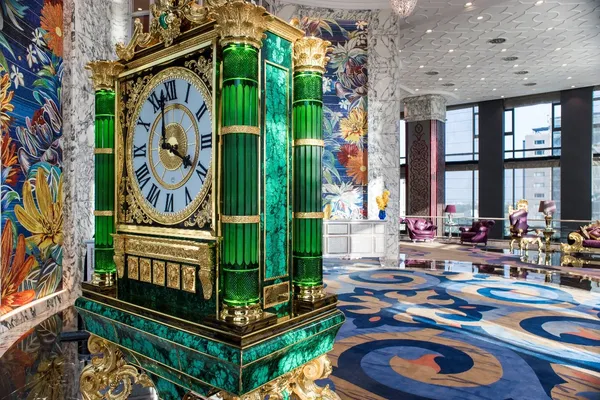
A restaurant in downtown Hà Nội replicates a state-run shop that provided food rations to the population during and after the war years.
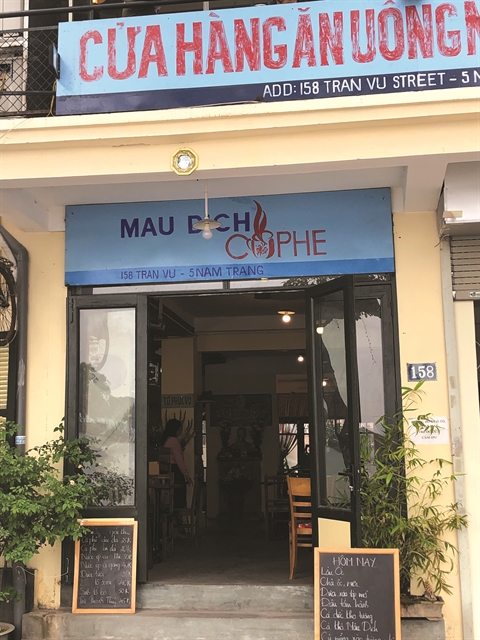
|
| PLEASANT SURROUNDS: The restaurant looks out to tranquil Trúc Bạch Lake. VNS Photo Mỹ Hà |
by Nguyễn Mỹ Hà
The trend towards replicating the experience and style of the 1970-80s began about a decade ago, when some cafés and small private museums started showcasing remnants of those hard economic times that many of us actually lived through.
One popular restaurant of its kind is Cửa hàng Mậu dịch Số 37, named after the street number it used to occupy down a tiny laneway called Nam Tràng just near Trúc Bạch Lake in Hà Nội.
It’s now been relocated but has retained the name. “Cửa hàng Mậu dịch” literally means “The Trading Shop”, and the restaurant tried to replicate a state-run shop that provided food rations to the population during and after the war years. Shopping coupons were divided between households, with all receiving a very small amount of food, fuel, bicycle parts, and even fabric, measured by the metre.
For starters on a recent visit, we ordered a special sandworm and egg nugget (VNĐ150,000), whose main ingredient is in season only at this time of year. It was soft and tender and as we ate the air filled with talk of the past.
We remembered how buying rice and other food for the family meant standing in line for hours each day. People would wake up at 5am or even earlier to be an early bird. If they couldn’t stay there until the shops opened at 7.30, they would put down a broken brick, or a tile, or anything that wouldn’t blow away, to mark their spot. This was always respected.
Meat and rice stamps were introduced in urban areas throughout the north in the late 1950s, after Việt Nam was divided into two parts under the 1954 Geneva Agreement. The North pursued a planned economic path that weighed every single citizen’s needs so that the limited resources could be distributed fairly.
Each family had a household shopping book, with coupons for buying a straw mat, soap, matches, fabric, and even needle and thread. On public holidays, people could buy some tea, cigarettes, candies, and cookies. For National Day, September 2, extra cookies, candies, cigarettes, and tea were available. It was also possible to buy mooncakes for kids as the Mid-Autumn Festival approached.
The most a family could buy was for the Lunar New Year, or Tết, when every household received a box of goods for the celebrations. If you could show certain certificates, like a birth certificate, a wedding certificate, or a death certificate, you were able to purchase goods that fit the occasion.
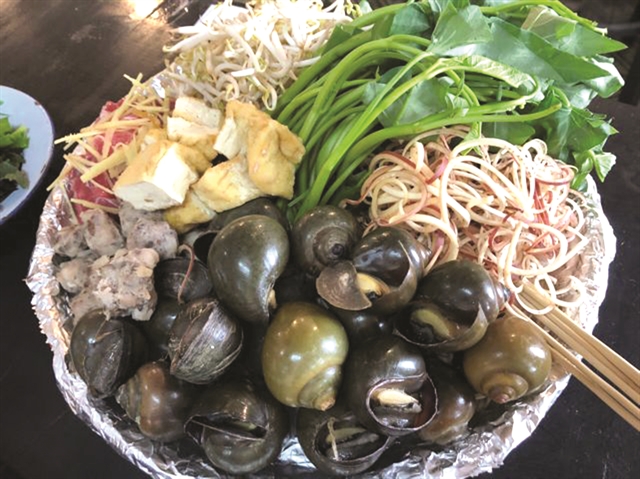
|
| SHARED FARE: The sour escargot hotpot, with meatballs and assorted vegetables, is best enjoyed by groups of a few people. VNS Photos Mỹ Hà |
The saleswomen who worked at these shops became powerful figures. It was considered a stroke of good fortune if a family member or friend worked in one. Others, meanwhile, were routinely subject to their harsh words and bad attitude.
Scattered around the restaurant are genuine food stamps from those days. There are also kerosene lamps, which lit up the house on nights when there was no electricity, and car-tyre sandals, which all men used to wear, whether to the battlefield or to the factory or to the university classroom. Also on show are the legendary pack bicycles that really were the only vehicle the Vietnamese could use to carry rice and ammunition to the battle of Điện Biên Phủ in 1954, and so became known by all as 'Điện Biên Phủ bicycles'.
How the generations before us lived, overcoming unimaginable difficulties from war and then famine, when even basic daily needs couldn’t be met.
The food back then was simple and basic, but it always seemed delicious. A tray of food typical of the times at the restaurant is VNĐ400,000, with pickled mustard greens stir-fried with fried pork fat chops, fried tofu marinated in green onions, vegetable and crab soup with pickled round eggplant, a dish of boiled morning glory, caramelised fish stew, steamed rice cooked in a cast iron pan with burnt rice, and last but not least, a little fish sauce and fresh chilli for everyone to dip their food in. But this was at the restaurant. Back in those austere days, a family may have only one or two dishes with rice, while the fish sauce was of varying quality.
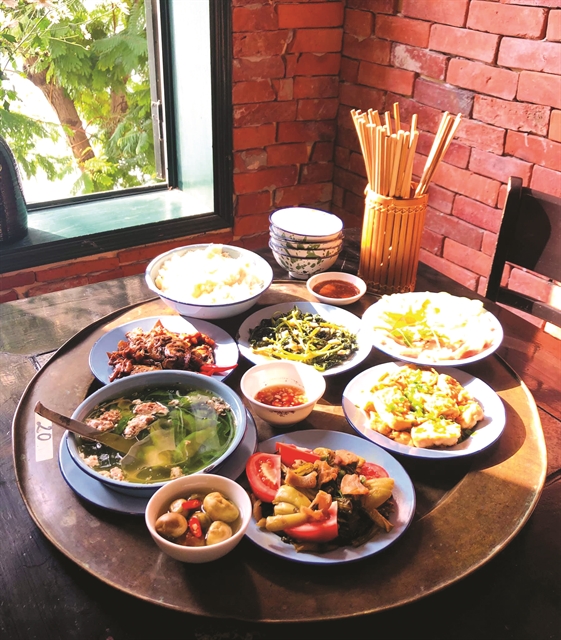
|
| SOUL FOOD: A family food tray from the restaurant’s menu. Photo courtesy of the restaurant |
The dishes were simple but delicious, and are still served at modest roadside food stalls for factory or construction workers and also office workers.
We next ordered fresh young mustard greens with stir-fried beef on top (VNĐ150,000). This dish reminded us of a more popular dish from the past — mixed lettuce with different aromatic herbs dipped in tomato sauce. No meat. The diet of those days, with more vegetables and less meat, made for a slimmer figure than seen today. As someone said, if we had to go back to only a civil servant's ration of 300 grams of meat a month and filled up on fruit and vegetables, not only would we have more attractive figures but we’d also not have to worry about heart disease or diabetes.
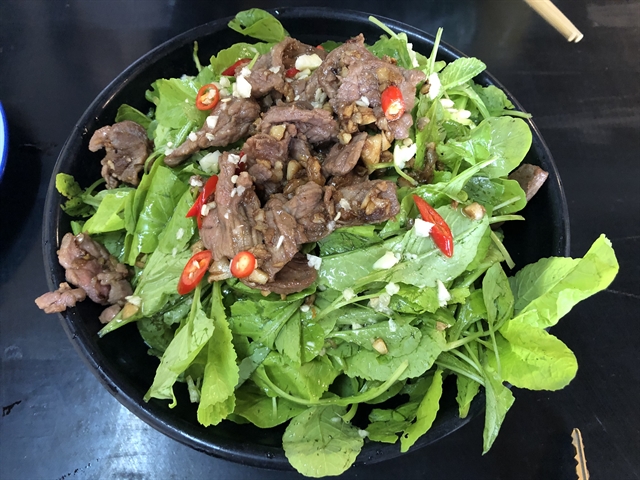
|
| GREENS APLENTY: Fresh young mustard greens with stir-fried beef on top. VNS Photo Mỹ Hà |
To put things into perspective, we decided to stray from the main theme of food scarcity and frugality and chose the sour hotpot of escargot with loads of vegetables, some meatballs and beef, and, of course, giant snails (VNĐ350,000).
This dish also reminded us of days long gone, way back even before the revolution in 1945. At that time, wealthier Hanoians had more choices when it came to food and those who were truly affluent had traditional food like this cooked at home. This particular hotpot took quite a lot of time for our table of five or six to get through, which allowed for long conversations.
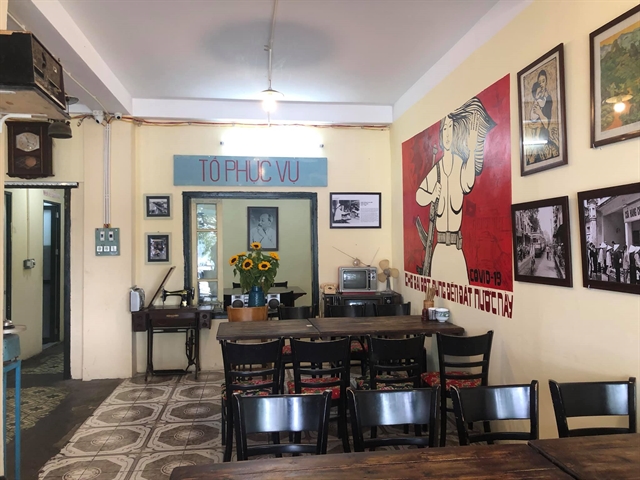
|
| BACK IN TIME: The interior features posters from those days. Photo courtesy of the restaurant |
The past can’t always be relived, whether happy or sad, but the memories remain. My cousins and I can recall stories from our shared childhoods, watching the work of artists who brightened up our early youth on theatre stages or on black & white TVs.
Feeling well-nourished after a healthy meal and happy memories, we returned to our modern lives a little less stressed and perhaps more adaptable to whatever may come our way. VNS
Cửa hàng Mậu dịch 37 Nam Tràng
Address: 158 Trấn Vũ Street, by Trúc Bạch Lake
Tel: 0912 285 859
Comments: Hanoian food typical of the 1970-80s

